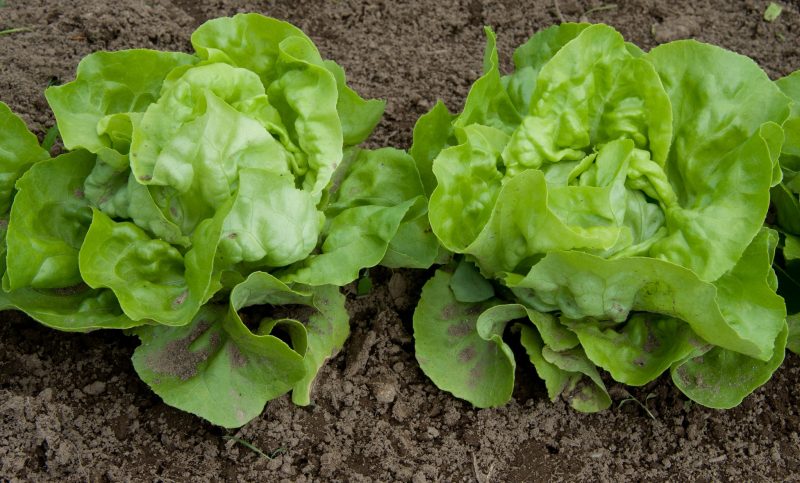If you’re not sure what the temperature is for growing lettuce from seed in the greenhouse, monitor your thermometer and aim for 70 to 75°F. A dilemma that a gardener might encounter with indoor cultivation of greens is what temp growing lettuce from seed in greenhouse works best. However, you don’t need to be intimidated by this crop because you already have a head start planting it in a greenhouse.
The hardiness zone will help you know if lettuce will grow well in your state. In particular, lettuce crops will thrive best in zones 4 to 9, so keep this in mind before considering their cultivation. However, the greenhouse provides control over the indoor conditions, so with proper planning and maintenance, you can have fresh and healthy greens at your garden easily.

What Is The Temperature For Growing Lettuce From Seed In The Greenhouse: Pointers To Consider
What determined the optimal temperature for growing lettuce from seed are seed germination and greenhouse condition. Additionally, always consider your growing zone or hardiness zone so you can make the necessary adjustments customized to your location. Each state has different climates and temperatures, so you may have to perform other greenhouse practices to maintain optimal conditions.
Seed germination
When growing lettuce from seeds, it’s crucial to remember that its germination is significantly affected by the temperatures. You want to maintain the greenhouse at 70 to 75°F for optimal germination, although the seeds can germinate even at 35°F. Still, freezing conditions can injure the lettuce crops, especially when they have not yet hardened.
Greenhouse condition
While lettuce is very adaptable in cold growing conditions, it’s still essential to maintain the greenhouse at 60 to 65°F for their growth. The crops will flower and seed at 70 to 80°F, and lettuce can withstand 80 to 85°F for a few days if necessary. But because you are growing from seeds, the temperatures are more influential in encouraging growth.
For maintenance, the daytime temperatures that will work best for lettuce is 60 to 65°F and 50 to 55°F at night. It would also be helpful to choose a lettuce variety that is appropriate for your expected conditions. For example, if your location has a warmer climate, what’s suitable for you are heat-tolerant varieties.
For greenhouses, extensions in universities recommend Leaf and Bibb lettuce varieties. For the former, Ruby Red, Grand Rapids, and Waldmann’s Dark Green are popular, while Mirlo, Roxy, Rosaline, and Cegolaine are common Bibb varieties in the greenhouse.
When To Grow Lettuce In A Greenhouse?
Since you’re starting from seeds, begin sowing as soon as the ground is workable or above 40°F. The soil temperature at 55 to 65°F will encourage germination as early as seven days. You can even have an earlier crop using a greenhouse by sowing before your last spring frost date.
In some states like North Carolina, it’s possible to sow both in spring and fall. However, the Department of Horticultural Science of NC State Extension mentioned that spring lettuce also tends to fail, so it’s best to use transplants for this period. On the other, direct seeding is best for fall crop lettuce, but since it can get hot and dry, always check your temperature and irrigation in the greenhouse.
In eastern North Carolina, direct seeding is typical in late January and early February, while those in the west start in late March and early April. If you’re doing a fall crop, sow 80 days before the first hard freeze. Depending on your area, you might even be able to plant a second crop in early winter.
Other Lettuce Growing Requirements
Soil, feeding, and watering
Lettuce will grow best in a fertile, loose, and loamy soil with good drainage and pH of 6.0 to 7.0. You can sow the seeds half an inch deep before covering with another inch of soil. As for feeding, New Mexico State University mentioned using a balanced fertilizer before planting and weekly nitrogen feedings.
What about the watering requirements of lettuce? In the greenhouse, it’s best to use a misting system to avoid overwatering the crops. A good measure is an inch of water every week so that you’ll get tender leaves.
Spacing
Allocate four to six inches of space between rows and thin the plants with an inch or two between them. If you’re growing lettuce seeds indoors for transplants, later on, a good ratio is 6 ounce of seed per 300 square feet of the bed. This ratio will give you enough operations for an acre.
Lettuce also works excellently in companion planting in the greenhouse. Chives or garlic can help deter aphids, so consider having rows of these crops in between your lettuce. You can also use blocks and containers for growing lettuce in the greenhouse, but pay attention to their root growth direction.
Conclusion
Lettuce is a healthy and delicious staple for our meals, and cultivating them indoors is even accessible both for commercial and personal use. If you’re interested, do you know what the temperature for growing lettuce from seed in the greenhouse is? A greenhouse maintaining 70 to 75°F is best for optimal germination, but always remember the different lettuce requirements for a successful growing season.
